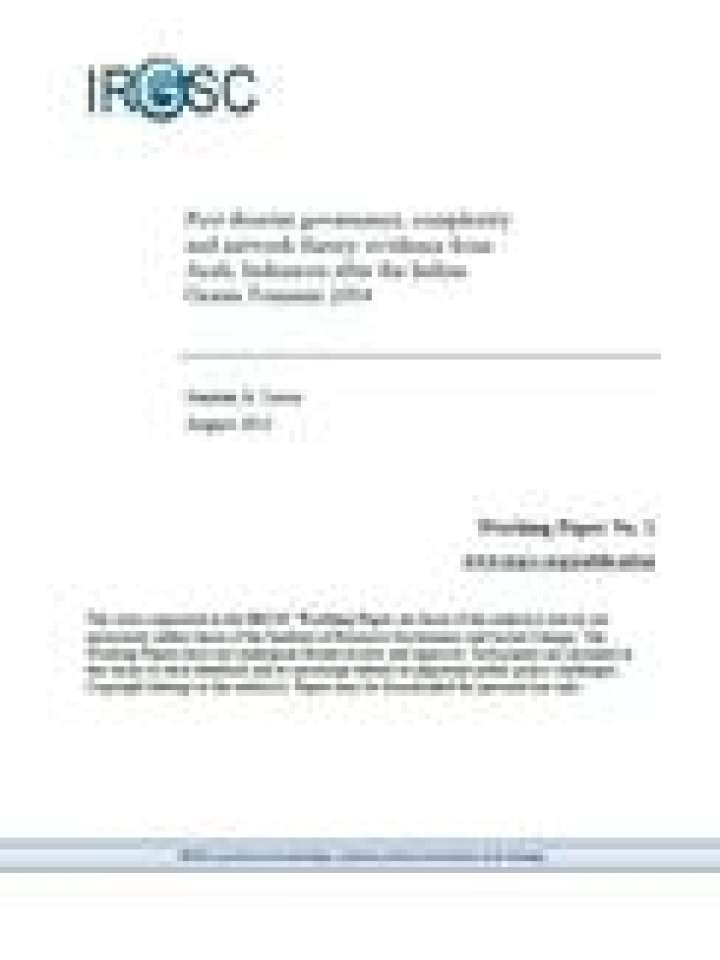Post disaster governance, complexity and network theory: evidence from Aceh, Indonesia after the Indian Ocean Tsunami 2004
IRGSC working paper no. 1:
This research aims to understand the inter-organizational network typology of large scale disaster intervention in developing countries and to understand complexity of post disaster intervention through the use of network theory based on empirical data from post tsunami reconstruction in Aceh, Indonesia, during 2005-2007. It addresses the ‘poly-centric’ features of emergency and reconstruction management, which promotes the notion that there are many overlapping centers of authority and responsibility for disaster risk reduction and post disaster intervention.
The findings suggest that the ‘degrees of separation’ (or network diameter) between any two organizations in the field is 5. There are significant amount of loops in the network which reflects typical ‘small-world’ realities and therefore made no significant difference with the real human networks as found in previous experiments. The findings show the landscape of humanitarian actors is not randomly distributed. Many actors were connected to each other through certain hubs, while hundreds of the actors make ‘scattered’ single ‘principal-client’ links. The paper concludes that by understanding the distribution of degree, centrality, ‘degrees of separation’ and visualization of the network, authorities can improve their understanding of realities of coordination from macro to micro scales.
Explore further
